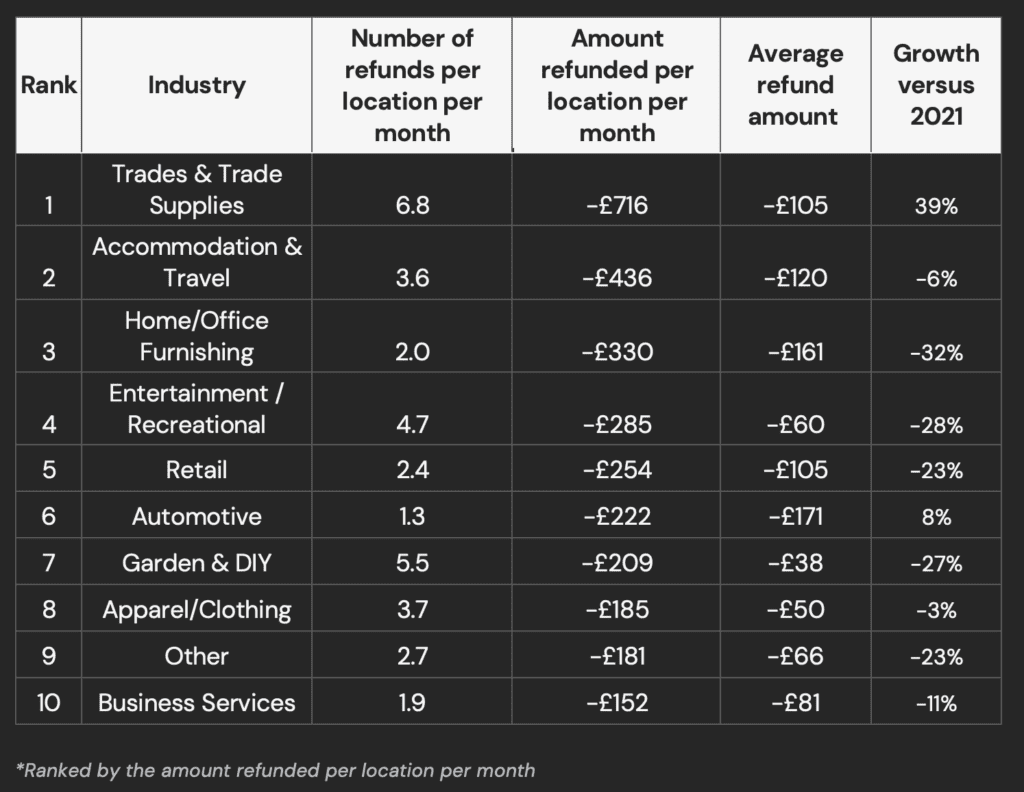UK small businesses lost an average of £12,083 a month due to serial refunders in 2022. Despite this number being shockingly high, the average has dropped 22% from 2021, suggestively indicating the impact of the cost of living crisis on overall consumer spending in the UK.
To collect this data, card payment provider, Paymentsense analysed anonymised transactions from over 54,000 Paymentsense card machines across the UK. Published in its Serial Refunder Report , the data reveals the regions, industries, and months with the highest value of returned items from October 2021 to September 2022.
The industries most impacted by serial refunders in 2022

The trade and supplies industry saw a 39% increase
The industry that saw the highest number of refunds per month was trade and supplies. The industry also saw a large increase in the value of the items returned, increasing by 39% compared to 2021.
Post-pandemic, consumers have continued to work on renovating their homes with a massive 50% demand up for home renovations in 2022 making this an active industry likely to see both more sales and returns as a result [2].
Accommodation and travel industries have seen the second highest return levels
Accommodation and Travel now ranks in second place, ranking third in our 2021 report, with a 6% decrease compared to last year. The decrease arguably comes as lockdown is no longer restricting travel.
The impact of moving away from remote working on small businesses
Home/Office and Furnishing now ranks third, ranking one place down from last year, with a 32% decrease. According to the report, Darlington had the highest amount of refunds per month in this industry (£917).
Even though working from home is still common, some workers are being asked to return to the office according to data collected in Business Insider [3], which explains the decrease of refunds per month this year compared to 2021.
Why has there been such a shift in behaviour?
The variance between refunds for the years 2021 and 2022 (primarily regions refunding less) could be indicative of the areas that have been hit harder by the cost of living crisis, which is likely to impact spending habits, thus reducing overall returns.
Additionally, with the ONS [1] reporting that overall spending is on a downward trend, a drop in returns (as highlighted by the 2022 Paymentsense report) is understandable.
An expert from Paymentsense comments on the positive effects this has on SMEs, “Serial refunders can prove very expensive for small business, so seeing a 22% decline is a very positive thing for business owners. However, it’s likely that the reduction is a result of consumers spending less, thus needing to return less.
Despite this, we do know that retail spending is increasing again in clothing stores (+2.5%), and online (+1.8%) according to Trading Economics (2) showing that while shoppers are spending less, budgeting and prioritisation are prevalent thus potentially making returns less likely.”
Sources









